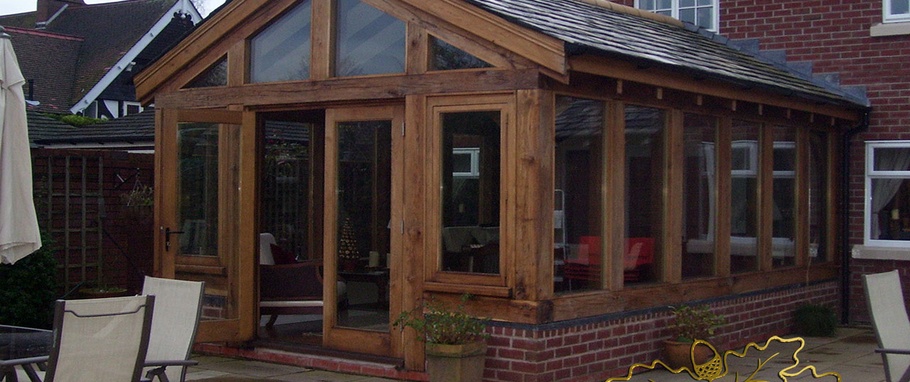

Timber, a versatile and renewable material, has garnered increasing attention in recent years for its pivotal role in fostering the circular economy and promoting sustainable construction practices. This editorial highlights the multiple environmental advantages and potential for reuse and recycling that make timber a key player in the quest for a more sustainable and resource-efficient building industry.
At the heart of timber's sustainability appeal is its source: trees. Timber is derived from this renewable resource, which can be replenished through responsible forestry practices. Trees play a vital role in sequestering carbon dioxide from the atmosphere, effectively reducing greenhouse gas emissions and contributing to climate change mitigation. This stands in stark contrast to carbon-intensive materials like concrete and steel, which have substantial environmental impacts during their production. By choosing timber, we can substantially reduce our reliance on such materials and help combat climate change while supporting a sustainable building industry.
Timber boasts exceptional thermal properties, making it an excellent choice for building materials. Its natural insulating properties significantly reduce the need for excessive energy consumption in buildings. With low thermal conductivity, timber effectively retains heat in colder climates and keeps interiors cooler in hotter regions. This not only enhances energy efficiency but also reduces our dependence on mechanical heating and cooling systems, which are often energy-intensive. In essence, timber construction can lead to buildings that are not only environmentally friendly but also cost-effective to heat and cool.
Timber's potential for circularity is a key driver of its sustainable appeal. This means that timber can be easily disassembled, reused, and repurposed in various applications. When buildings are deconstructed, the timber used in their construction can be salvaged and incorporated into new projects or transformed into other wood products. Reclaimed timber maintains its structural integrity and often adds a unique character to the built environment, reducing waste and promoting resource efficiency. This reuse and adaptability make timber a valuable asset in the journey toward a circular economy, where resources are conserved, and waste is minimized.
Timber's eco-friendly attributes don't end with its reuse potential. Timber can be recycled into various other products or converted into bioenergy. Timber waste can be processed into wood chips or pellets suitable for biomass energy production, offering a sustainable alternative to fossil fuels. Additionally, by-products of timber processing, such as bark and sawdust, find applications in diverse industries, including agriculture and biofuel production, and are even used in manufacturing composite materials. This versatility further underscores timber's role in fostering sustainability, not just in construction but across various sectors.
Beyond these key points, it's important to delve deeper into the benefits and considerations surrounding timber use in construction, particularly in the context of oak framing.
Oak framing, a traditional construction technique that utilizes oak timbers for structural framing, exemplifies the principles of sustainability. Oak, with its inherent durability and strength, has been a preferred timber for centuries in Europe and beyond. When considering oak framing, several additional factors come into play that further bolster its sustainability credentials:
Longevity: Oak is renowned for its exceptional durability. In oak-framed buildings, the wood can last for centuries, reducing the need for frequent replacements or maintenance. This longevity not only conserves resources but also minimizes the carbon footprint associated with the production and transport of new building materials.
Natural Aesthetics: Oak timbers possess a timeless and distinctive appearance. This natural beauty not only adds character to structures but also reduces the reliance on energy-intensive finishes and cladding materials. The aesthetic value of oak can be a significant asset in promoting sustainable architecture.
Local Sourcing: Sourcing oak from local or sustainably managed forests can further enhance the environmental benefits of oak framing. Reducing the transportation distance of materials minimizes associated emissions and supports local economies and forestry practices.
Connection to Tradition: Oak framing is deeply rooted in tradition and craftsmanship. Embracing this construction method can promote a cultural connection to the past, encouraging an appreciation for sustainable building practices and heritage conservation.
Design Flexibility: Oak's structural capabilities allow for versatile and open design possibilities. This adaptability can facilitate energy-efficient and space-effective designs, contributing to a more sustainable use of resources and optimizing the building's performance.
Maintenance and Conservation: Oak framing, when properly maintained, can last for generations. This longevity aligns with principles of conservation, reducing the need for demolition and disposal of materials, which can result in substantial waste and energy expenditures.
In the context of oak framing, timber's sustainable attributes are even more pronounced. By leveraging oak as a primary building material, construction projects can benefit from its longevity, aesthetics, and adaptability while promoting local sourcing and a connection to heritage craftsmanship.
To ensure that timber, including oak, used in construction adheres to sustainable practices, it's crucial to look for certified wood products. Various organizations, such as the Forest Stewardship Council (FSC) and the Programme for the Endorsement of Forest Certification (PEFC), offer certification for timber sourced from responsibly managed forests. Using certified timber not only supports sustainable forestry but also provides transparency and accountability in the supply chain.
In conclusion, timber, particularly when utilized in oak framing, plays a pivotal role in promoting sustainability within the construction industry. Its renewable nature, energy efficiency, circular economy potential, recyclability, and bio-based alternatives make it a compelling choice for builders and architects striving to create more environmentally responsible structures. By emphasizing the qualities of oak, including its durability, natural aesthetics, and adaptability, we can further enhance the sustainability of construction projects while preserving a connection to tradition and heritage. The use of certified sustainable timber ensures that these practices are grounded in responsible forestry, contributing to a brighter and more sustainable future for the building industry and the environment as a whole.
We'd love to hear about your oak framed project. Call us today on +44 (0) 1444 455 455 +44 (0) 1444 455 455 for a no obligation estimate. Alternatively, complete the form below and we will be in touch.